Sandra and Em discuss what your child needs from you based on their preference for Judging or Perceiving in the Myers-Briggs personality type model.
Links and references:
This episode is sponsored by The Fancy Free Podcast where Joanne and her guests tell their most embarrassing funny stories so we all feel less alone in our imperfections and forge connections through vulnerability and humor.
Download the free guide to determine whether your child prefers Judging or Perceiving.
Check out the Family Personalities podcast page for episodes broken down by topic.
If you’re new to Myers-Briggs personality type, check out episodes that cover the basics.
Enlist Sandra’s services to create a more peaceful dynamic in your family!
Email us at familypersonalitiespod@gmail.com
Follow us on Instagram @FamilyPersonalities
Follow us on Facebook @FamilyPersonalities
Leave us a review on iTunes/Apple Podcasts
Full show notes:
Today’s Topic: What your child needs from you based on their preference for Judging or Perceiving in the Myers-Briggs model.
Check out episode 35 for how to determine whether your child prefers Judging or Perceiving or download the free guide
For Judging vs Perceiving in parents listen to episode 31
Other preference pairs in kids: www.familypersonalities.com/kids
Judging vs Perceiving in Kids Review:
- Judging: Prefer to put the outer world in order, with planning and structure
- Like order, structure and rules
- Make decisions quickly and easily
- Like to make and stick with a plan
- Prefer to finish projects
- Perceiving: Prefer to take the outer world as it comes, staying open and flexible.
- Like flexibility and spontaneity
- Postpone decisions to gather more information
- Like to adapt and respond to changes
- Are playful and impulsive
Supporting your child with a Judging preference:
- Be aware of your child’s need for firm plans.
Leaving something undecided for very long may cause anxiety, and changing plans is a recipe for stress. When a change in plans is necessary, allow time for your child to get used to the new plan and empathize with their difficulty letting go of the old plan.
Try: Create a calendar or a daily schedule with pictures for littler kids
- Allow extra time for transitions
Such as drop-off or pick-up from school or changing from play time to meal time. Think ahead and give plenty of warnings.
Try: Let them choose when to finish (e.g. let them finish the chapter they’re reading before they have to come to dinner)
- Make an extra effort to arrive on time or even early for their school or other activities as much as possible.
Being late (or even just the anticipation of being late) can be a stressful experience, especially for Introversion & Judging together.
Try: Setting a recurring alarm for yourself to start getting ready to leave
Supporting your child with a Perceiving preference:
- Be patient and allow for extra time where you know decisions will need to be made.
Making a choice/decision can be overwhelming for children with a Perceiving preference because they like to keep their options open and don’t like to close the door on any possibilities.
Try: Remind them rarely are decisions permanent and it’s okay if you change your mind later.
- Walk away while your child completes a task
Kids who prefer Perceiving like to play and dabble while they complete their tasks and aren’t as worried about time or deadlines. Parents of children with a Perceiving preference may find there is less conflict when they abstain from watching and go to another room, rather than try to supervise or control the way he or she completes their task.
Try: State what time a task needs to be done by and the clear logical consequence of a task not being completed on time and then let go of the attachment to it getting done and walk away. Follow through with the consequence if the task isn’t complete on time but don’t shame or belittle. They will learn through practice.
- Limit the number of rules
In opposition to children with a Judging preference, who usually find comfort in rules and will follow them most of the time, children with a Perceiving preference find rules a stifling barrier to exploring their world. To set your child up for success, focus in on the important things and let smaller things slide.
Try: Write down all the “rules” /structures/restrictions you impose on your child (even little things like where they can eat, what time they can eat,) – odds are it’s more than you think. Can you cut them in half? Which half is not as important? Then make clear consequences for the most important rules still remaining.
Comment or Email: What do you do to create a peaceful relationship with your child who prefers Perceiving or your child who prefers Judging?
